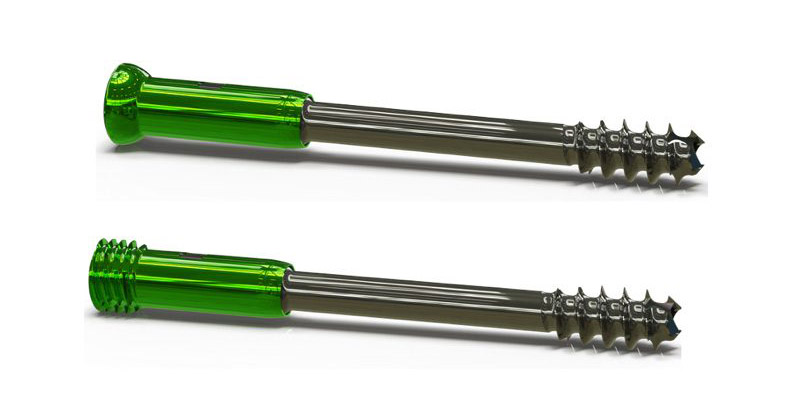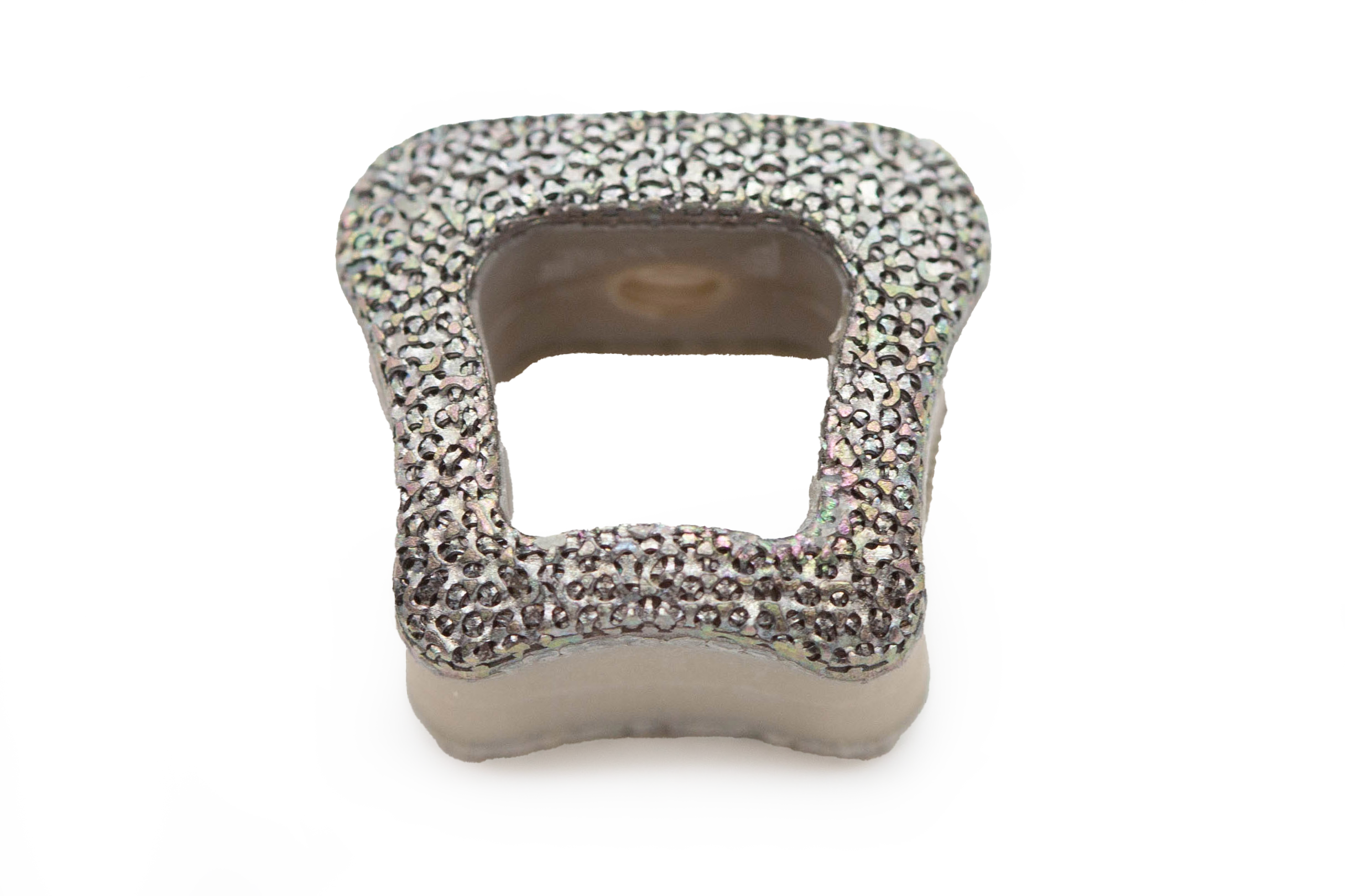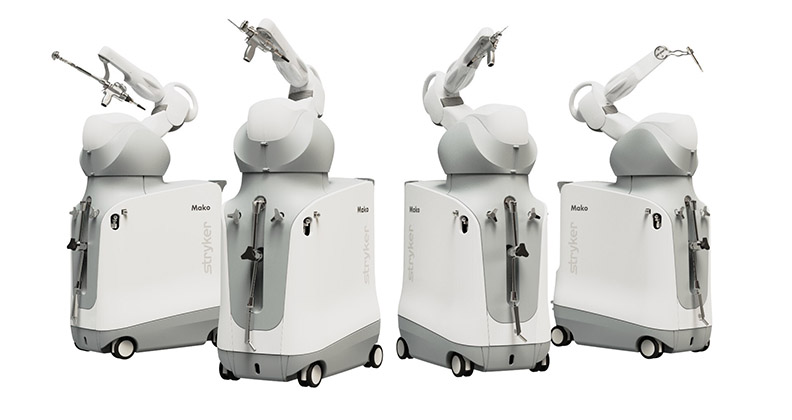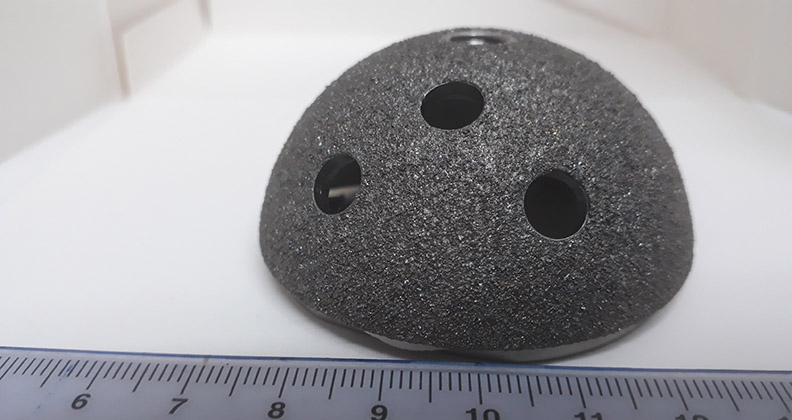
Orthopedic surgeons see the future of surgery every time they slide on a virtual reality (VR) or augmented reality (AR) headset.
Surgeons use AR to overlay preoperative images and data onto a patient’s body during surgery. This allows for improved accuracy and a better understanding of anatomy and surgical plans.
“Think of a fighter pilot wearing a visor that’s displaying electronic data overlaid what they’re seeing in the real world,” said orthopedic surgeon Michael Taunton, M.D., in a Mayo Clinic Q&A. Dr. Taunton performed Mayo Clinic’s first AR knee replacement in the fall of 2021.
He wore an AR visor that projected digital information about the patient and the surgical plan within his view, but out of his direct line of sight to the surgical field. Cameras embedded in the system recorded information captured by sensors on the patient’s knee and displayed it through the visor.
Voice recognition software powered by artificial intelligence allowed Dr. Taunton to select patient information to view or guidance for a specific step in the procedure. The technology eliminates the need for mechanical guides, a factor he said contributes to more efficient joint replacement surgery.
Computer-assisted navigation provides surgeons with clinical information generated from the patient’s preoperative CT scans, but the information is displayed on monitors hung outside of the sterile field. With AR, surgeons have access to the same information without averting their eyes from the patient.
Dr. Taunton said that AR helps him make more precise and accurate bony cuts for improved implant placement and joint alignment. He also said the technology allows surgeons to reduce outliers and perform more efficient and precise knee replacement surgery.
Although long-term data is not yet available to show AR improves patient outcomes, Dr. Taunton called the technology “innovative” and said that providing surgeons with real-time feedback on how they’re operating while their attention remains focused on the patient is the next step forward in orthopedic care.
Michael Khazzam, M.D., an Associate Professor of Orthopaedic Surgery at UT Southwestern Medical Center, performed the first AR shoulder replacement surgery in Texas in April 2021.
Dr. Khazzam used the AR platform to build a virtual 3D model of the patient’s shoulder. He examined the joint’s anatomy and pathology, marked incision points and adjusted the planned placement of the implant. He was also able to “move” the patient’s arm and shoulder through the full range of motion to gauge how well the procedure would work. He essentially performed the procedure before touching the patient.
“We anticipate future improvements will only enhance the accuracy of placing the implants, cutting the bone and determining the trajectory of the screws in hardware,” Dr. Khazzam said. “AR feels like a game-changing advancement for shoulder repair and replacement surgery.”
Almost Like the Real Thing
VR provides its users with a more immersive and interactive experience through stunningly realistic simulations. The technology can enhance the training of surgical professionals and is used by universities, hospitals and device companies.
PrecisionOS Technology, a Canadian-based medical technology company, is preparing new orthopedic surgeons for the O.R. through a sophisticated VR training platform.
“Like most areas of innovation, the initial discussion should revolve around problem solving,” said Danny Goel, M.D., an orthopedic surgeon and CEO of PrecisionOS. “For example, how scalable and effective are current methods of hands-on training?”
Not very.
To address a shortcoming in training the next generation of surgeons, the American Board of Surgery (ABS) recommended improving the quality of teaching clinical and procedural skills instead of increasing the number of cases surgeons perform.
Recognizing this as a problem worth solving, the company focused on a potential solution involving the use of AR and VR platforms. “Surgical education is one of the most exciting areas of interest and potential for these emerging technologies,” Dr. Goel said.
Dr. Goel said surgical residents are getting less hands-on training than ever and it’s affecting their confidence and autonomy. “A significant percentage of residents don’t feel ready to independently perform core procedures upon residency completion,” he explained. “Over 90% opt for an additional fellowship year.”
PrecisionOS has a proprietary medical-grade VR platform that recreates surgical experiences down to the minute details. The platform provides surgeons-in-training with an opportunity to experiment in a fully 3D environment.
A study published in the Journal of Bone and Joint Surgery demonstrated that VR helps surgeons learn surgical concepts more efficiently and effectively. “It makes sense to learn in a virtual 3D environment to maximize perceptual expertise while minimizing cognitive load,” Dr. Goel said. “This will lead to improved pre-op planning, surgical skills and execution in the operating room.”
Dr. Goel said the science of learning is clear. “We learn through execution and deliberate evaluation of errors, which come at a significant risk and cost in real-life scenarios,” he noted.
The ability to provide surgeons with a safe place to practice is driving the growing interest in the use of VR to simulate the look and feel of actual surgery. Ultimately, the technology could lead to safer surgeries.
“Performing efficient surgery without a positive result is an undesirable outcome,” Dr. Goel said. “That’s why time measurement is a lower-level metric for measuring surgeon performance. The focus needs to be on skills that are transferable, relevant, decision-based and that directly impact patient care.”
Daring to Look Ahead
Orthopedics is a medtech leader in the commercialization of AR and VR systems. In December 2022, FDA published a list of AR and VR products that have received market clearance or de novo classification. The agency noted 15 of the 39 products have orthopedic applications, primarily joint replacement and spine.
While AR and VR surgical adoption remains low, it’s likely that larger orthopedic companies will partner with or acquire technology from startup firms instead of developing systems internally. In the last year, for instance, Enovis acquired Insight Medical Systems and MicroPort Orthopedics announced a partnership with Pixee Medical.
Orthopedic companies must balance investment in a promising technology for future applications with the reality of limited acceptance and usage among surgeons, according to Dr. Goel.
At least for now.
Dr. Goel believed that the capabilities of AR and VR aren’t yet fully realized. “A technology adoption curve needs to be overcome,” he said. “I believe that once this chasm is crossed, the platforms will integrate naturally into increasing numbers of healthcare systems and facilities.”
Research and development leaders need to think tangentially while having a deep understanding of market dynamics and relevant pressures on the healthcare system and providers, according to Dr. Goel. “Great technological solutions are gaining traction,” he said. “Adopting them demands challenging the status quo and having a vision for the future.”
PM
Patrick McGuire is a BONEZONE Contributor.




